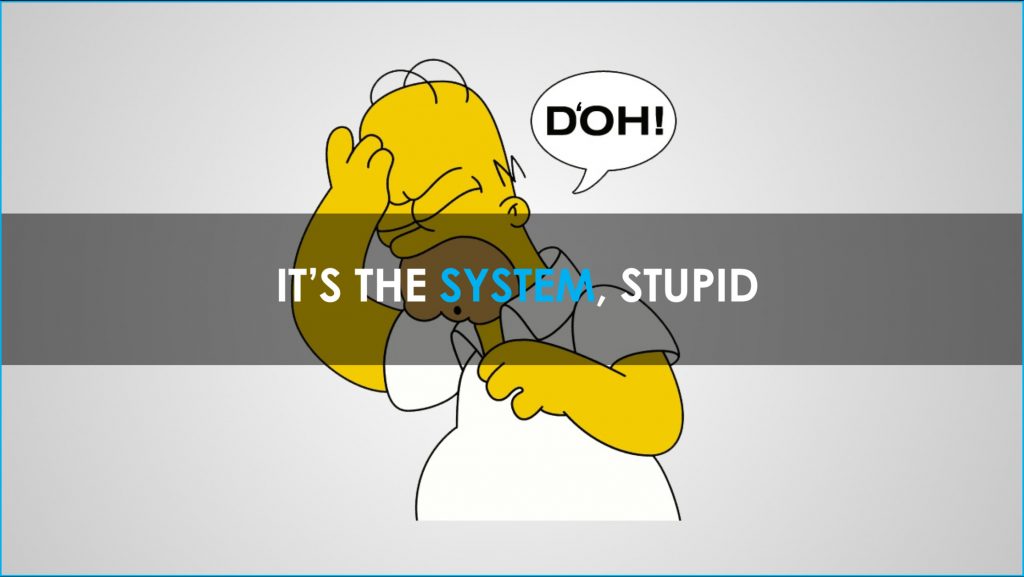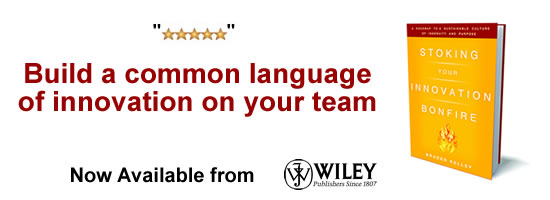The Secret to Organizational Innovation
In my previous article (Why Innovation Remains Elusive), I identified a half dozen obstacles to companywide innovation. I also hinted at a grand unified solution in the form of a strategic innovation system. Allow me ease into it by way of story and analogy.
Most people are familiar with the name Toyota. Most business people are familiar with (or at least not completely ignorant of) the vaunted Toyota Production System (TPS), a much-studied manufacturing approach. Having served as a fully retained advisor to Toyota for over 8 years, I have particular point of view on that system, and, more importantly, why it matters when it comes to a discussion of innovation.
As former Raychem CEO Paul Cook once wrote, “To be an innovative organization, you have to ask for innovation. You assemble a group of talented people who are eager to do new things and put them in an environment where innovation is expected. It’s that simple. And that hard.”
This was my very challenge at Toyota. At the time, the production environment was implementing over 700,000 ideas a year. The non-manufacturing side of the business wasn’t anywhere close to that. Many had tried porting over TPS principles to knowledge work, but had failed because knowledge work is far closer to art than science, even though we like to pretend it isn’t.
I was looking for a toehold, a handrail, anything that would give me some traction. Trying to break things down into component parts…tools, techniques, processes, DID NOT WORK. In the midst of it all I had one of those slap to the forehead moments…not quite a Eureka moment or epiphany but more of a if-it-was-a-snake-it-would-have-bit-me†sort of things. In other words, it was staring me in the face: “It’s the system, stupid.”

If you were to ask a manufacturing executive in the 1950s what kept him up at night, you’d hear a whole host of woes related to quality, cost, and speed: overload, inconsistency, and waste in the form defects, bottlenecks, inventory issues, retooling, line delays, supplier issues, you name it.
It’s easy enough to develop processes and tools and techniques to address one or two of these issue, but collectively? it requires a set of integrated processes, tools and techniques to achieve what I call an elegant solution, which is one that achieves the maximum effect with minimum means.
The elegant solution was the Toyota Production System, defined as “a repeatable system of work designed to produce the highest quality, lowest cost, and shortest lead time.”
Put a pin in that for moment.
I recently asked over 100 CEOs what their greatest challenges, issues, and pain points were when it came to innovation in their organization, irrespective of how they defined innovation. The responses produced the same sort of gauntlet as the one faced by 1950s manufacturing executives. It just had different issues: lack of capability, resourcing, risk, getting started, incrementalism, creativity, fear of failure, executive buy-in, focus, return on investment, alignment, confidence, bureaucracy.
Like production issues, you could easily pick off a single challenge and meet it, but collectively? A elegant solution — a system — is required.
Introducing the Strategic Innovation System (SIS), defined as “a repeatable system of work designed to consistently guide creative concepts from inception to tangible commercial product in alignment with company strategic goals.”
And just as the Toyota Production System under the guidance of a master can be effectively installed in a manufacturing setting, so can the Strategic Innovation System under the guidance of a master be installed in a more corporate setting (as well as a manufacturing one).
Conceptually — in full awareness that all models are wrong but some are useful — the SIS can be thought of as three major gears, constantly moving and feeding both forward and back. Visually it looks like this (to see it in motion click here):

The first gear, Governance, is about clarity, commitment and alignment. The second gear, Generation, all about directed creativity and conceptualizing. The third gear, Go-to-Market all about value delivery and commercializing. One without the others will obviously give lift, but will be insufficient to neutralize the laundry list of issues above…innovation will thus remain elusive.
The real value of the SIS is embedding an ethos of experimentation, the benefit of which is the ability to rapidly learn: because if we know anything, it’s that learning and innovation go hand in hand, but learning comes first.
I’ve pressure-tested this system in the wild with a few select client companies. What makes it work is to think about it just as you would enterprise software: a robust set of field-tested, integrated tools and methods — each of the tri-part gears plays host to a powerful but user friendly toolkit — with complete installation and training to help manage the change, supported by an innovation center of excellence.
Now, some may say that the secret to organizational innovation is “culture.” I wouldn’t argue that at all. It’s just that it is “the system” that lies at the root and gives rise to “culture.” You cannot change a culture without changing the underlying system. The system bats last. It’s what Paul Cook was hinting at.
I aspire to make this system available to anyone interested in transforming their company into a constantly innovating one. One thought is to provide the “system in a box,” with extended guidance and support –live and virtual — and a continuously improving toolkit, on a subscription basis.
If this is of interest to you, please let me know so that I might keep you informed of progress toward public availability.
Wait! Before you go…
Choose how you want the latest innovation content delivered to you:
- Daily — RSS Feed — Email — Twitter — Facebook — Linkedin Today
- Weekly — Email Newsletter — Free Magazine — Linkedin Group
 Matthew E. May is the author, most recently, of Winning the Brain Game: Fixing the 7 Fatal Flaws of Thinking.
Matthew E. May is the author, most recently, of Winning the Brain Game: Fixing the 7 Fatal Flaws of Thinking.
NEVER MISS ANOTHER NEWSLETTER!
LATEST BLOGS
How Brexit Has Affected UK E-commerce Businesses
Photo by Zyro on Unsplash The popularity of online shopping was already growing at an impressive rate – and…
Read MoreOvercoming range anxiety: three tips for EV owners
Photo by Jenny Ueberberg on Unsplash In the last few years, electric vehicles (EVs) have become more and more…
Read More


